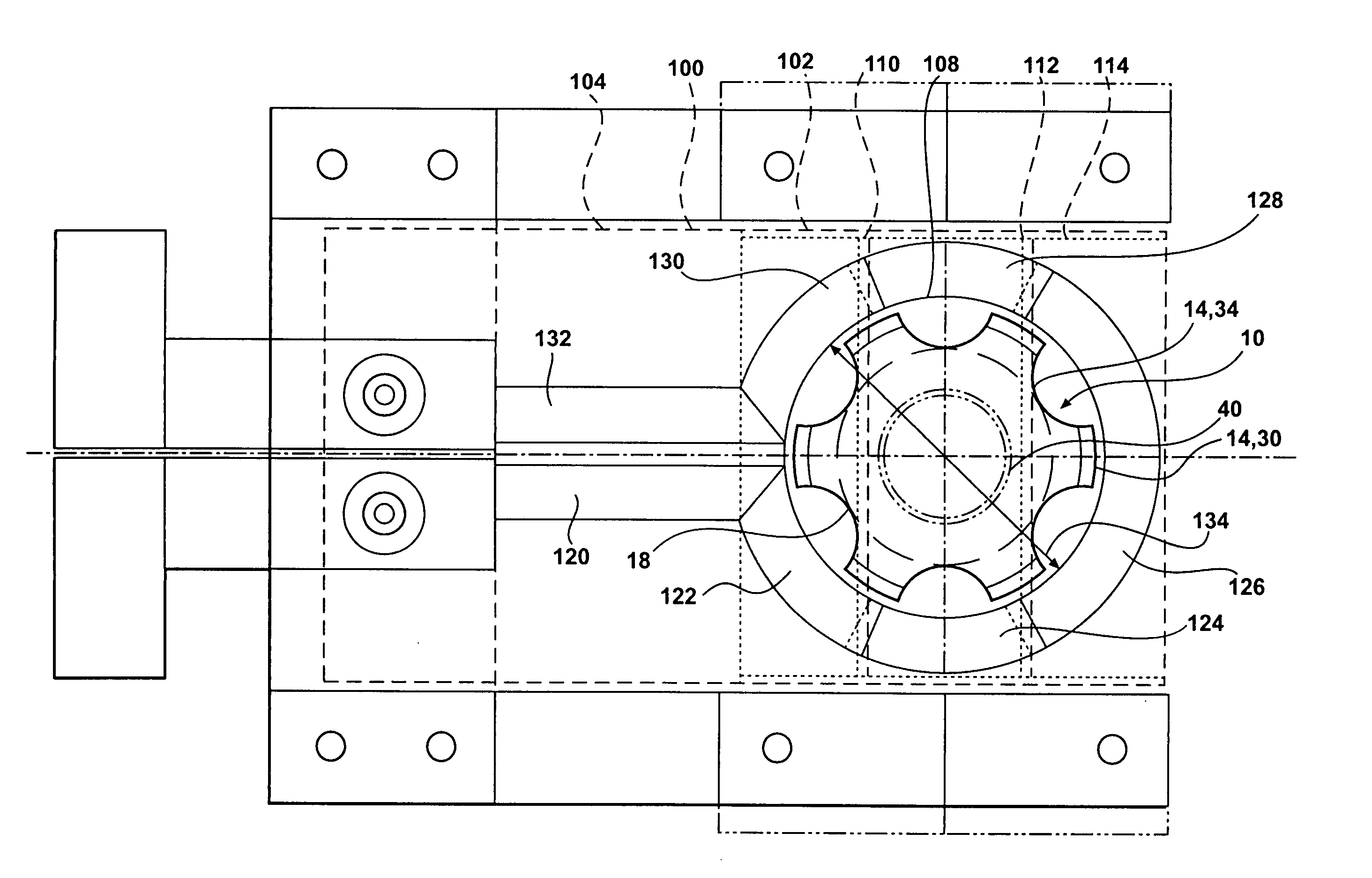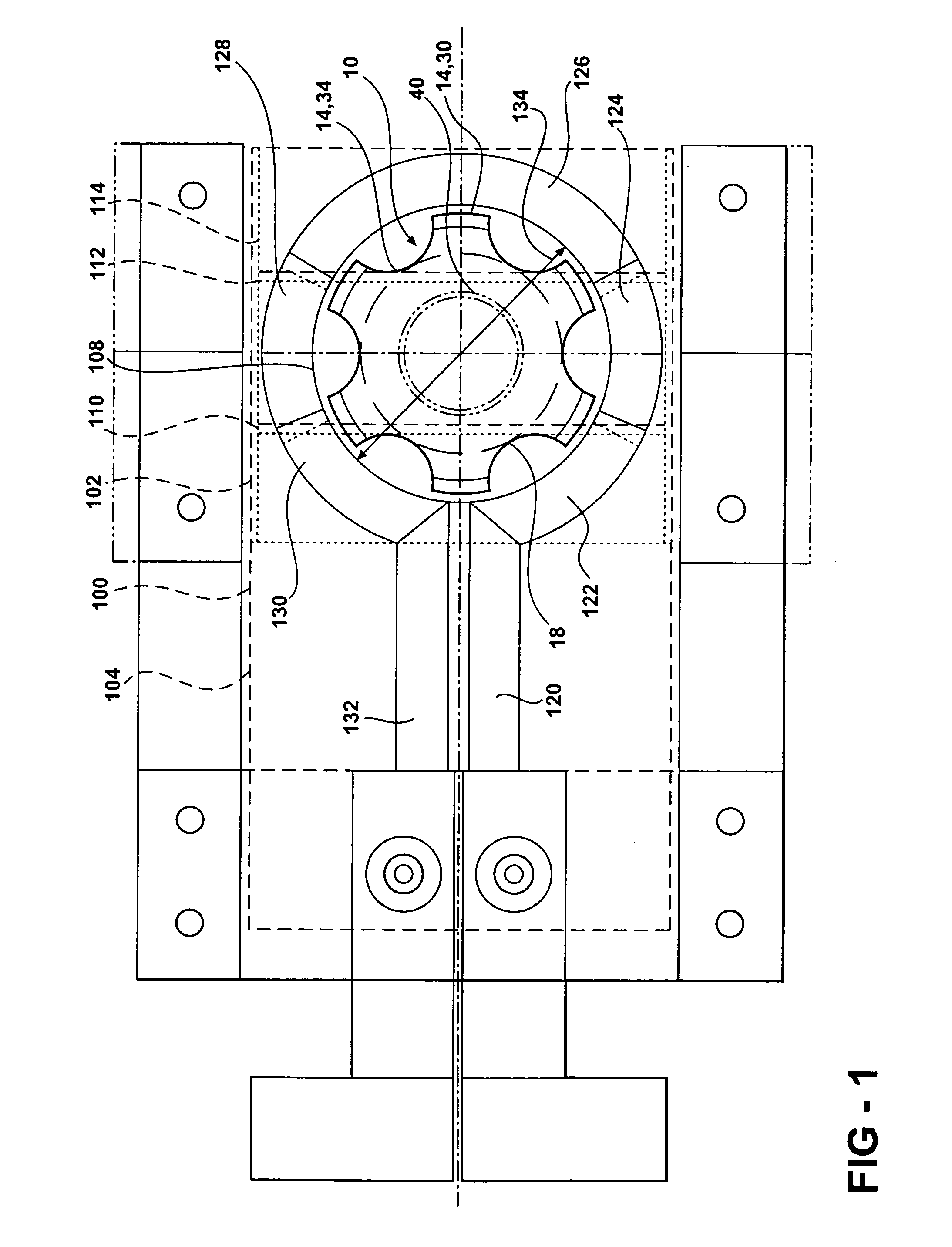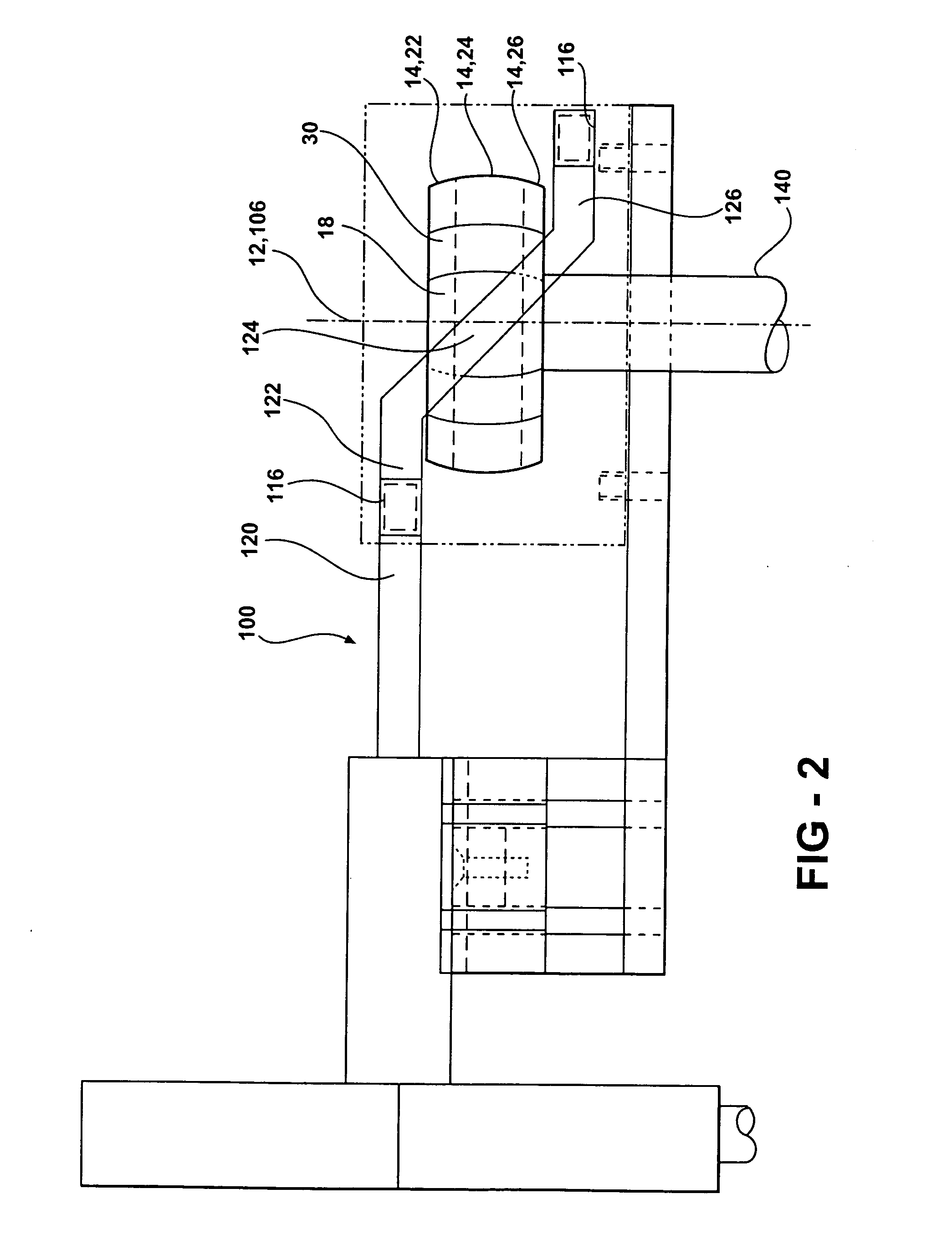Induction heat treatment method and coil and article treated thereby
- Summary
- Abstract
- Description
- Claims
- Application Information
AI Technical Summary
Benefits of technology
Problems solved by technology
Method used
Image
Examples
Embodiment Construction
[0023] Referring to FIGS. 1-3, the present invention generally comprises a method of induction heat treatment 200 of a metal article 10 by means of an induction coil 100, and comprises the steps of: selecting 210 an article 10 for heat treatment having a longitudinal axis of rotation 12 and an outer surface 14 having an upper section 26, a lateral section 27 and a lower section 28, and comprising a plurality of points, such as d1 and d2 as illustrated in FIGS. 5 and 6, having a plurality of normal spacings from the axis of rotation; selecting 220 an induction coil 100 comprising a semi-cylindrical upper coil portion 102, a semi-cylindrical lateral coil portion 104, a semi-cylindrical lower coil portion 106 and a longitudinal axis 108, which is adapted to receive the article 10 for heat treatment and apply a non-planar magnetic field to the outer surface 14 of the article 10; placing 230 the article 10 within the induction coil 110; rotating 240 the article 10 within the induction co...
PUM
| Property | Measurement | Unit |
|---|---|---|
| Temperature | aaaaa | aaaaa |
| Width | aaaaa | aaaaa |
| Width | aaaaa | aaaaa |
Abstract
Description
Claims
Application Information
 Login to View More
Login to View More - R&D
- Intellectual Property
- Life Sciences
- Materials
- Tech Scout
- Unparalleled Data Quality
- Higher Quality Content
- 60% Fewer Hallucinations
Browse by: Latest US Patents, China's latest patents, Technical Efficacy Thesaurus, Application Domain, Technology Topic, Popular Technical Reports.
© 2025 PatSnap. All rights reserved.Legal|Privacy policy|Modern Slavery Act Transparency Statement|Sitemap|About US| Contact US: help@patsnap.com



